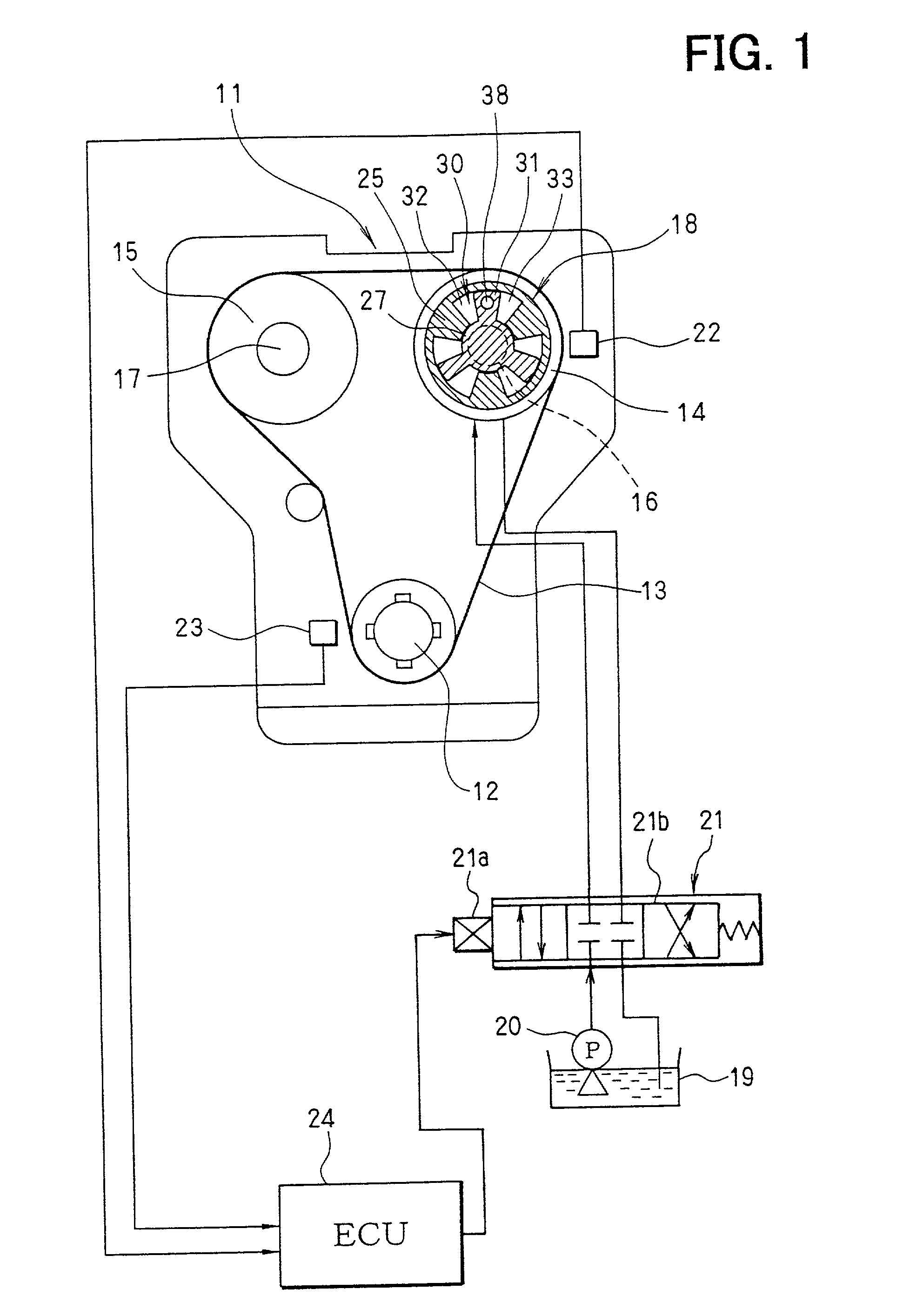Control apparatus for device having dead band, and variable valve system
a control apparatus and dead band technology, applied in the direction of device details, machine/engine, device details, etc., can solve the problems of excessive response, difficult control of such a control object, and difficulty in realizing both a fast response and control stability at the same tim
- Summary
- Abstract
- Description
- Claims
- Application Information
AI Technical Summary
Problems solved by technology
Method used
Image
Examples
first embodiment
[0107] First Embodiment
[0108] By referring to the diagrams, the following description explains a plurality of preferred embodiments of the present invention. It is to be noted that, throughout the following description of the embodiments, an element in a specific embodiment identical with or similar to a counterpart employed in a preceding embodiment is denoted by the same reference numeral as the counterpart in the explanation of the specific embodiment and figures related to the specific embodiment, and the description of the element is not repeated.
[0109] First of all, the configuration of a variable valve timing control system is explained by referring to FIGS. 1 and 2. An internal combustion engine 11, which is referred to hereafter simply as an engine 11, has an intake-side camshaft 16 and an exhaust-side camshaft 17. A crankshaft 12 is connected to sprockets 14 and 15 by a timing chain (or a timing belt) 13. A power driving the crankshaft 12 is propagated to the intake-side c...
second embodiment
[0141] Second Embodiment
[0142] Next, a second embodiment of the present invention is explained by referring to FIGS. 10 and 11. In this case, a map shown in FIG. 10 is used for finding an amplitude d that is suitable for the position of the center DCENT of the duty value Duty. As is obvious from FIG. 10, the amplitude d that is suitable for the center DCENT of the duty value Duty is a maximum value when the center DCENT of the duty value Duty is located at a position in close proximity to the holding duty value Dh or in close proximity to the center of the dead band. The longer the distance by which the position of the center DCENT of the duty value Duty is separated away from the holding duty value Dh, the smaller the amplitude d. The maximum value of the amplitude d is at least equal to half the width of the dead band. For an area outside the dead band, a good response characteristic is obtained even if the duty value Duty is not vibrated. In addition, there is an effect of avoidi...
third embodiment
[0145] Third Embodiment
[0146] In a third embodiment, when the vibration center value DCENT exists outside the dead band, the amplitude d is reset to 0 to halt the vibration of the duty value Duty. Thus, it is possible to provide a good response characteristic as well as terminate the vibration. As shown in FIG. 12, if the vibration center value DCENT goes beyond the limit of the dead band, the vibration of the duty value Duty is terminated. In order to keep up with variations in dead-band width and changes caused by an aging characteristic, the duty value Duty may be vibrated over a range slightly wider than the dead band.
PUM
 Login to View More
Login to View More Abstract
Description
Claims
Application Information
 Login to View More
Login to View More - R&D
- Intellectual Property
- Life Sciences
- Materials
- Tech Scout
- Unparalleled Data Quality
- Higher Quality Content
- 60% Fewer Hallucinations
Browse by: Latest US Patents, China's latest patents, Technical Efficacy Thesaurus, Application Domain, Technology Topic, Popular Technical Reports.
© 2025 PatSnap. All rights reserved.Legal|Privacy policy|Modern Slavery Act Transparency Statement|Sitemap|About US| Contact US: help@patsnap.com



